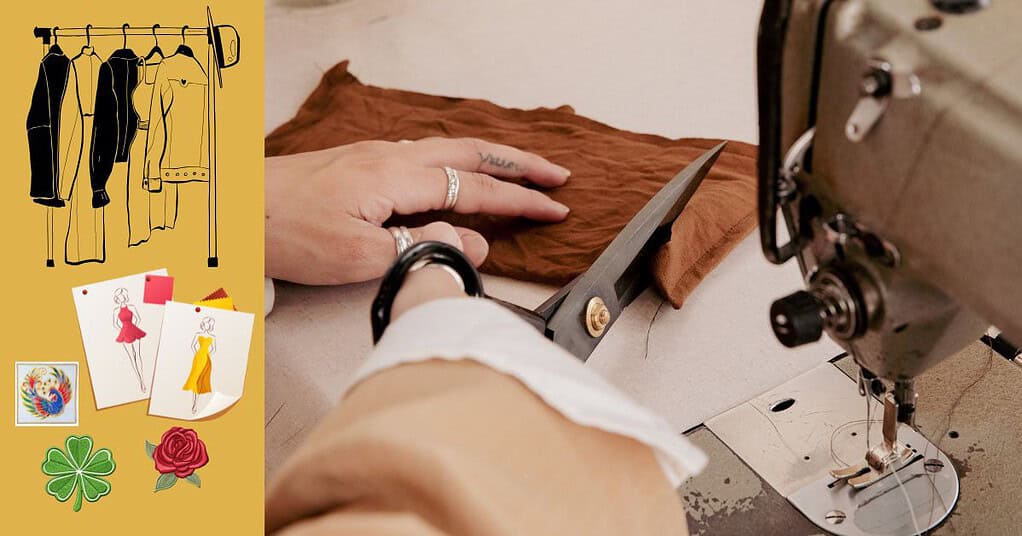Custom embroidery patches can be a subtle yet effective way to introduce personality to your outfits when considering upgrading your wardrobe. You’ll want to start by selecting patches that resonate with your style, whether quirky or sophisticated. Once you’ve got your patches, the fun begins with various application techniques and creative placements that can transform a simple piece of clothing into a bold statement personalized to say voice from the heart. But before you start stitching, here are a few important considerations that you must think of because this could make or break your look.
So, the right path of using EMB patches as fashion symbols takes 5 things to do;
- Right Collection/Patch Types
- Technique to Apply/Backing Options
- Patch Style/Purpose
- Creative Placement/Correct Target
- Caring/Choosing Durable
Choosing the Right Patches
When it comes to choosing the right patches, you’ll want to narrow down your options based on style, purpose, and fabric.
First, think about the style that speaks to you—are you aiming for a vintage look or something modern?
Next, consider the purpose of the patch. Will it add flair to a jacket, or serve as a branding element?
Lastly, the fabric matters; cotton, twill, and denim each offer different textures and durability.
You’ll want to ensure the patch complements your garment while standing up to wear and tear.
Application Techniques for Patches
Applying patches to your garments can enhance their look and express your unique style.
To start, you’ll want to determine the best application method for your patches. Iron-on patches are popular for their ease; simply place the patch on your fabric, cover it with a cloth, and apply heat with an iron for 30 seconds.
If you prefer a more durable option, sew-on patches are ideal. Use a needle and thread to secure the patch firmly, ensuring it withstands wear and tear.
For a temporary solution, fabric glue can be used, but remember it may not hold up as well over time.
Whichever method you choose, make sure to follow the manufacturer’s instructions for the best results.
Styling Patches on Clothing
Patches can transform your clothing into a canvas for personal expression, allowing you to showcase your unique style.
When styling patches, consider the vibe you want to achieve. For a casual look, place a few patches on denim jackets or jeans; they instantly add character. If you’re aiming for a more polished outfit, try sewing patches onto blazers or skirts—this creates an unexpected twist that sets you apart.
Mix and match sizes and colours to create visual interest, but keep balance in mind. Remember, you don’t have to limit patches to clothing; accessorizing bags or hats can elevate your entire ensemble.
Ultimately, let your creativity shine through and wear your patches with confidence.
Creative Patch Placement Ideas
How can you elevate your style with creative patch placement? Think outside the box! Instead of just sticking patches on the sleeves or front, try unexpected spots.
Place a vibrant patch on the back of your jacket for a stunning surprise. Consider clustering several patches together on the front pocket of your jeans or on the collar of a shirt for a trendy look.
Don’t forget about accessories—add patches to bags, hats, or even shoes. Layering smaller patches on a larger one can create depth and interest.
Experiment with angles and orientations; a sideways patch can add an edgy vibe. Trust your instincts, and have fun personalizing your pieces with patches that reflect your unique style!
Caring for Your Patches
Caring for your patches is essential for maintaining their vibrant look and longevity. Start by gently wiping them with a damp cloth to remove dust and dirt. Avoid using harsh chemicals, as they can damage the fabric and embroidery.
If your patches get wet, let them air dry completely before storing them. When washing items with patches, turn them inside out and use a gentle cycle. It’s best to avoid high heat when drying; air drying is safer.
Place a thin cloth over the patch to protect it from direct heat if you need to iron. Finally, store your patched items in a cool, dry place to prevent fading and fraying.
With these simple steps, your patches will stay looking fresh and stylish!
Extra Things You Should Know Well About
Before closing this topic, we would like to answer related question you might have in mind while making your fashion clothe elevated with EMB patches.
What Materials Are Best for Custom Patches?
When choosing materials for embroidery patches, you’ll want durable fabrics. We recommend cotton twill for small monograms and felt applique for large jacket back sizes like mascots, biker etc.
Are There Size Restrictions for Embroidery Patches?
Yes, there are size restrictions for emb patches.
Typically, manufacturers have minimum and maximum dimensions. For example, hat sizing locks at 3 inches, while it could be up to 4 inches for baseball caps. For the back or front of the clothing; ideal size is between 10 to 14 inches bigger size.
Can I Use Custom Patches on Bags and Accessories?
Absolutely, you can use customized emb patches on bags and accessories. They add personality and style, letting you express your individuality.
How Do I Design My Own Custom Embroidery Patches?
To design your own custom embroidery patches, start by brainstorming ideas, selecting colors, and choosing a shape. Use design software to create your layout, then find a reputable manufacturer to bring your vision to life.
FINAL WORD
Custom embroidery patches can transform your wardrobe, adding a personal flair to your style. By choosing the right patches and applying them carefully, you can create eye-catching outfits that reflect your individuality. Don’t be afraid to experiment with different placements and combinations to make a statement. With proper care, your patches will stay vibrant and fresh. So, let your creativity shine through your custom patches, making fashion uniquely yours!

